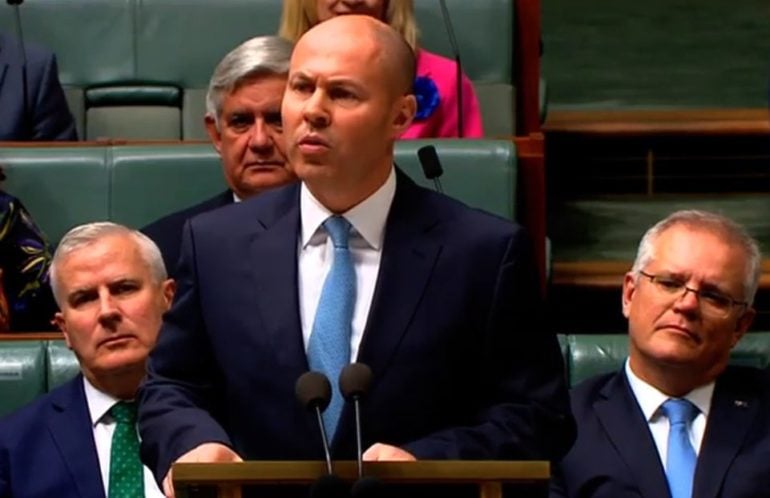The fintech sector has welcomed the findings of the federal government’s payments system review as giving local startups the chance to compete on a level playing field against tech giant such as Apple and Google.
The Farrell review, commissioned by Treasurer Josh Frydenberg as part of 2020’s budget response to the pandemic, to investigate whether the nation’s payments system is fit-for-purpose and responsive to changing technology, business needs and consumer demand.
The review received 45 submissions, including from major banks, the RBA, BNPL fintechs, Brighte, PayPal, Stripe, several financial industry bodies and even the Salvation Army.
Review author Scott Farrell said products such as digital wallets, BNPL and cryptocurrencies demonstrated the emergence of a new payments ecosystem, with many more to come.
“The evolution of the nature and methods for payments will provide convenience for consumers and opportunities for businesses, but it will also increase complexity and risk,” Farrell says in the 115-page report.
“Our regulatory architecture therefore needs to support the payment system through this transformation, so that Australians can enjoy the benefits with confidence.”
While the payments ecosystem is in the midst of rapid change, the increased convenience and opportunities it delivered was also giving but also giving rise to greater complexity and new risks.
The final report makes 15 recommendations, concluding that the regulatory architecture needs to progress in three key areas:
- Enhanced payments leadership. The Government’s role in providing overarching strategic direction, vision and oversight should be enhanced with new obligations and powers to protect the payments system and to establish an inclusive, specific, and dynamic strategic plan for its development.
- Aligned payments regulation. The coordination between payments regulators should be strengthened and a functional perspective on payments regulation implemented to improve consistency and certainty in regulatory outcomes and better align with the strategic direction.
- Simplified payments licensing. The government should establish a single, integrated licensing framework for payment services that scales up with businesses as they grow, provides clear consumer protection, and facilitates transparency in access to payment systems.
Farrell argues that implementing that framework will encourage collaboration between the public sector and private sector participants to plan for new developments, respond to new challenges and improve the way that consumers and businesses are served.
It should also:
- enable greater adoption of faster payment services by consumers and governments, broader innovation, and improved engagement with economy-wide payments challenges;
- support the creation of new digital infrastructure, allowing our payments system to better integrate with the digital economy and innovations like the consumer data right and digital identification;
- assist Australian businesses who participate in payments to offer their services internationally;
- ensure Australian customers can safely benefit from the payment services developed overseas.
“We cannot delay. It has been more than 20 years since Australia updated its regulatory architecture for payments, and many other countries have already modernised their approaches to the benefit of their consumers and businesses,” Farrell warns.
“Although what we have has served us well, it is now time for an upgrade. A world-class digital economy needs a world class payments ecosystem.”
The reports says payments now perform a vital role in providing consumers and businesses with a way to engage with Australia’s digital economy and it should supportit and be aligned with broader developments in the data ecosystem, including the future directions of the Consumer Data Right and digital identity.
The report can be downloaded here.
Here’s what Australian fintech leaders said in response to the review report.
Rebecca Schot-Guppy
CEO, FinTech Australia

Rebecca Schot-Guppy, CEO of Fintech Australia. Photo: Elke Meitzel
We welcome today’s report into Australia’s payment systems. It’s been over twenty years since our last review. Back then, cheques, cards, and cash were primary forms of payment. Some of the major technology companies driving this shift in how we pay didn’t even exist.
We also echo Scott Farrell’s sentiments that we won’t achieve a world-class digital economy, without a world-class payments infrastructure. It underscores the importance of this report.
With regards to the recommendations, we agree with and want to highlight the need for a single simplified payment licensing system that applies to all players, scales with the business and protects consumers. This is especially crucial as more tech companies venture into payments.
In addition, we agree and want to highlight the report’s first recommendation that all future policy future-proof itself by putting the needs of businesses and consumers that rely on payment services at the centre of future reform. This is a stronger approach that is smarter than just slapping regulations on the newest players in the market as a quick fix and will encourage overall innovation.
We also agree that the Government, as one of Australia’s largest users of payments services, should use its weight to support broader policy objectives.
Victor Zheng
CEO and co-founder, mx51

mx51 CEO Victor Zheng
This review is incredibly timely. It is now increasingly obvious that tech disruptors like Apple, Google and even Afterpay are using payment solutions to make further inroads into offering other broader financial services, whilst continuing to operate outside of regulatory impositions.
They currently operate in a grey zone of payment regulation. This allows them to bypass some regulations imposed on the banks and move faster as a result. This report puts forward measures to level the playing field, which will be crucial for competition in this sector going forward.
Simone Joyce
CEO & co-founder, Paypa Plane

Paypa Plane CEO Simone Joyce
The Payments Regulation Review has addressed some of the key challenges facing innovative payment companies in Australia in line with FinTech Australia’s submission to the inquiry. Introducing a ‘payments license’ will be a big step forward for Fintechs.
This will reduce uncertainty and complexity for companies looking to bring innovative and competitive payment products to market and should have a positive impact on investment into the sector.
Appointing a convenor to work with the Treasurer to bring issues to the table and to coordinate the work of the regulators in the space is an interesting recommendation. The convenor, if the role is created in-line with the review’s recommendations could act as the gatekeeper for getting industry issues heard by the Treasurer and it would be critical to the FinTech sector that the person elected to the role had experience with or knowledge of the FinTech industry.
Regulating payments by function and applying a tiered licensing framework are smart recommendations that will not only support new entrants into the payments landscape, they also align with international regulations and create appropriate and stable growth pathways – these are the right ingredients for supporting a healthy and expanding industry and will flex with that industry as it grows.
Grant Bissett
Co-founder, Pin Payments

Pin Payments co-founder Grant Bisset
Online payments have seen a significant increase since the emergence of COVID-19, with Australia’s ecommerce industry growing to a revenue of $US27 billion in 2020, becoming the 10th largest market globally.
With consumers forced online, due to restrictions, online payments have become the new-norm. However, the infrastructure and government support surrounding the sector has not progressed as quickly as the demand of the digital economy.
As addressed in the report, we need to see a shared strategy and vision for the future of the online payments industry, as is seen with traditional payments, and this vision needs to adhere to the fast and ever-changing nature of tech.
Unfortunately, the existing regulator architecture surrounding online payments has not been created with tech agility in mind and fails to adequately represent the position of SMBs, who are the predominant users of online payment services. The Government’s final report should reflect the growing number of businesses whose livelihood, since COVID-19, depends on online payments.
With Australia now ranking as the 10th largest ecommerce market globally, with a revenue of $US27 billion in 2020, greater investment in this area is vital.
However, further education surrounding the importance of online payments providers, for both consumers and businesses, should also be a key area of focus in the final report. Online is constantly evolving, leaving significant knowledge gaps for those outside the industry. This needs to change, and regulators must work with those in the industry, to develop educational tools to empower both individuals and businesses on their options and the importance of online payments.
Likewise, payments providers are also in need of greater regulatory support to protect both themselves and consumers from the growing risk of online fraud, money laundering and other financial risks. The preliminary report has outlined this as a key area, and with fraud significantly increasing in the last 12 months, this couldn’t be more timely.
We also encourage the government to implement simplified licensing, as outlined in the report, as it will help PSPs more easily adhere to regulatory requirements, remove infrastructure efficiencies.




















Trending
Daily startup news and insights, delivered to your inbox.